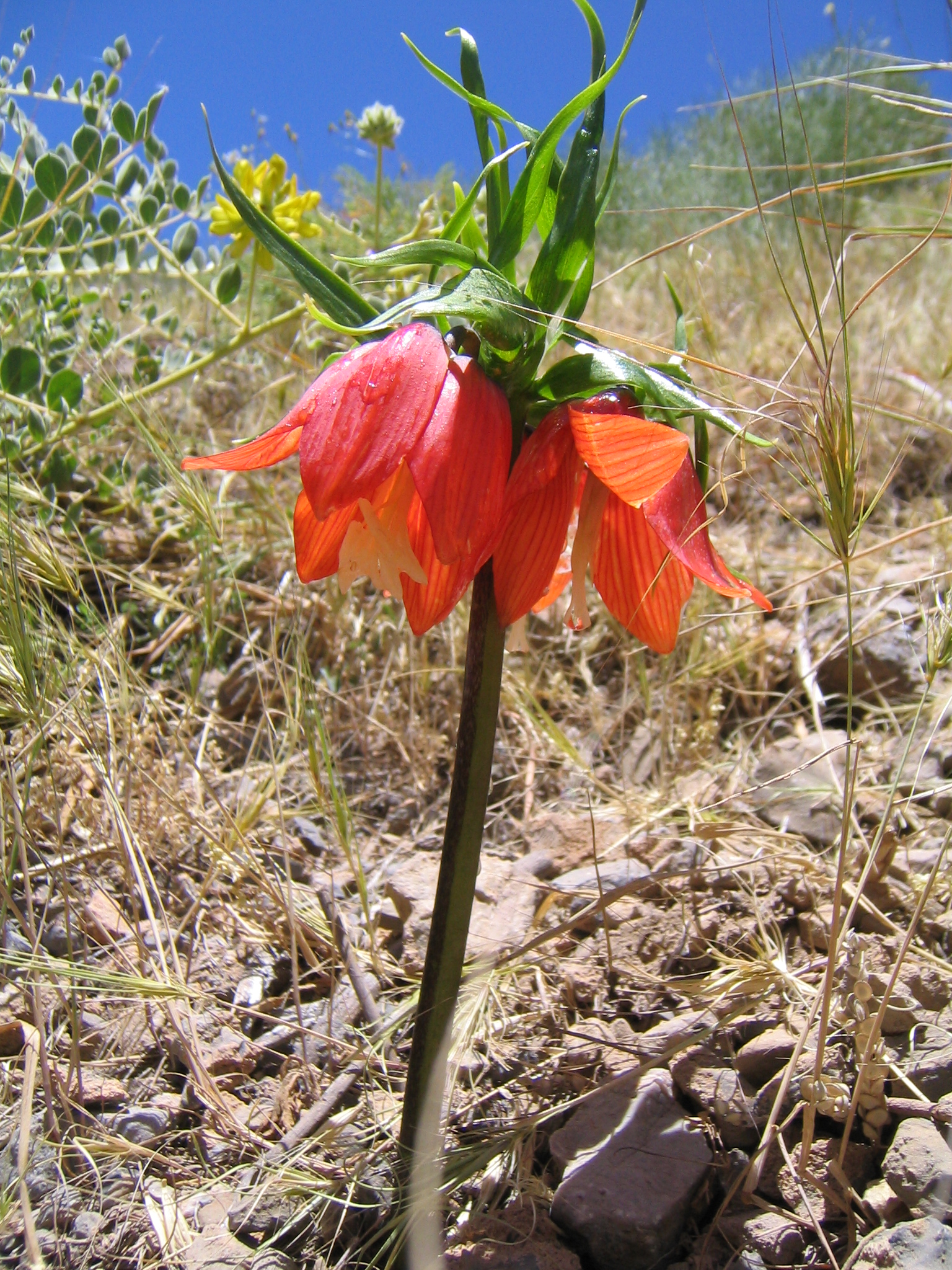Photo : Fritillaria imperialis
Province:
LorestanAdditional Information:
Description:
Fritillaria imperialis (Crown imperial or Kaiser's crown) is a species of flowering plant of the genus Fritillaria, family Liliaceae, native to a wide stretch from Anatolia across the plateau of Iran to Afghanistan, Pakistan and the Himalayan foothills. It grows to about 1 m (3 ft) in height, and bears lance-shaped, glossy leaves at intervals along the stem. It bears a prominent whorl of downward facing flowers at the top of the stem, topped by a 'crown' of small leaves, hence the name. While the wild form is usually orange-red, various colours are found in cultivation, ranging from nearly a true scarlet through oranges to yellow. The pendulous flowers make a bold statement in the late spring garden; in the northern hemisphere, flowering takes place in late spring, accompanied by a distinctly foxy odour that repels mice, moles and other rodents.[1] Due to the way that the bulb is formed, with the stem emerging from a depression, it is best to plant it on its side, to prevent water causing rot at the top of the bulb.[2] Fritillaria imperialis requires full sun for best growth, and sandy, well-drained soil for permanence. After flowering and complete drying of the leaves, the stems should be cut off just above the ground. The Latin specific epithet imperialis means "showy".[3] Numerous cultivars have been developed for garden use, of which the yellow-flowered 'Maximea Lutea' has gained the Royal Horticultural Society's Award of Garden Merit
Download this photo